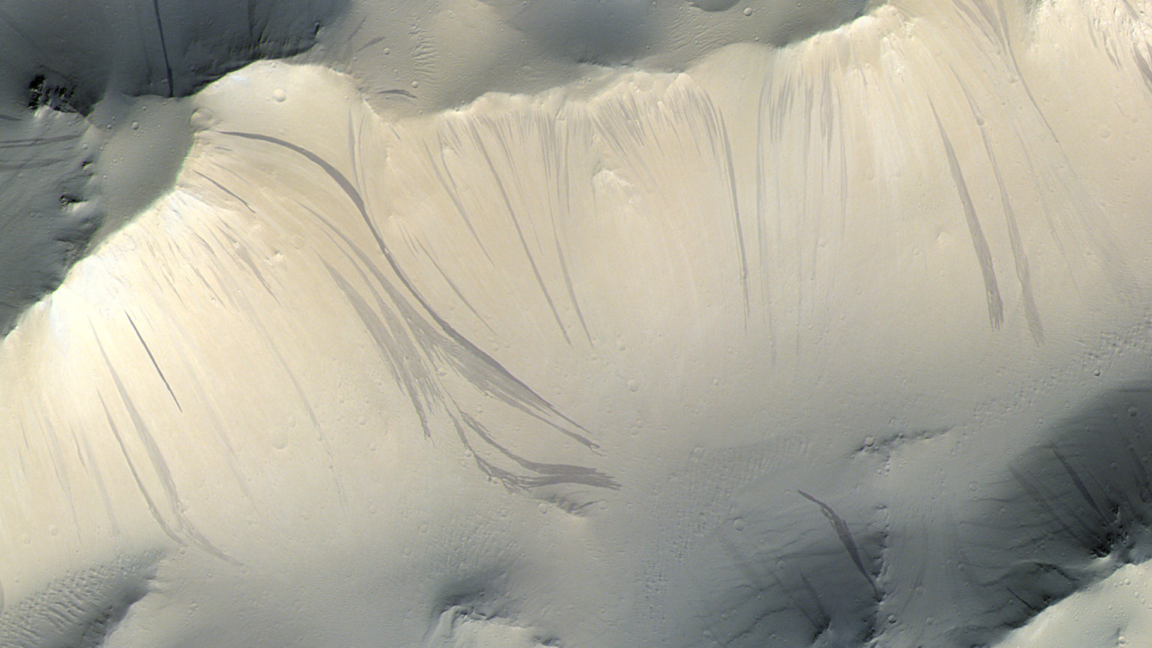INSUBCONTINENT EXCLUSIVE:
Welcome to the Tuesday Telescope
wonder.One of the longest-standing mysteries about Mars has been the presence of dark and light streaks on the rolling hills surrounding
This week's image, from the European Space Agency, shows some of these streaks captured last October.This massive mountain rises about 22 km
above the surface of Mars, more than twice as high as Mount Everest on Earth
It is bordered by hummocky deposits, called aureoles, that were formed by landslides from the mountain
decades, scientists have wondered what they might be.The streaks look remarkably like flowing water
Initially, scientists believed these features might be flows of salty water or brine, which remained liquid long enough to travel down the
This offered the tantalizing possibility that life might yet exist on the surface of Mars in these oases.However, it now appears that this
According to new research published Monday in the journal Nature Communications, these slopes are dry, likely due to layers of fine dust
suddenly sliding off steep terrain
To reach this conclusion, the researchers used a machine-learning algorithm to scan and catalog streaks across 86,000 satellite images from
NASA's Mars Reconnaissance Orbiter
They created a map of 500,000 streaks across the surface of Mars
In doing so, the researchers found no evidence of water.The image in today's post comes from the European Space Agency's ExoMars Trace Gas
Orbiter, and it has been slightly modified to enhance the appearance of the streaks
It looks like art.Source: European Space AgencyDo you want to submit a photo for the Daily Telescope? Reach out and say hello.

